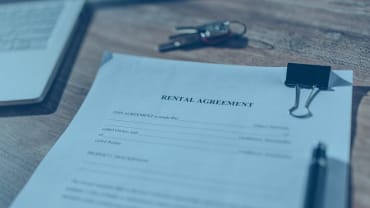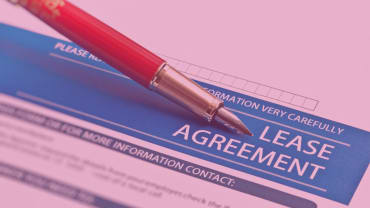On 17 December 2020, HM Treasury and the Home Office published the National Risk Assessment of Money Laundering and Terrorist Financing 2020 (the "Risk Assessment"). The Risk Assessment has increased the risk rating of some real estate businesses to being at a high risk of money laundering; and, has resulted in more businesses being subject to the Money Laundering, Terrorist Financing and Transfer of Funds (Information on the Payer) Regulations 2017 ("Regulations"). Real Estate businesses are categorised as one of either Property, Estate Agency or Letting and in this article are collectively referred to as "PEAL" businesses.
Background
The Risk Assessment characterises money laundering as a "fundamental threat to the country’s future security, resilience and prosperity", which is estimated to cost the UK economy £37 billion per year. Tackling it has become a major priority and increased enforcement action means that businesses which facilitate money laundering are facing punitive sanctions. Money laundering affects many different industries and sectors. Those attempting to launder funds through innocent businesses are becoming more sophisticated in their methods and, in reality, all businesses will need to consider and address the risks of money laundering. We focus here on the real estate sector.
Key findings
Traditionally, the high-risk areas for money laundering are financial services, money service businesses, and cash. However, as criminals become more sophisticated and the availability of new mechanisms to facilitate money laundering increases, the risk projections shift.
Taking each PEAL business type in turn:
Property
According to the Risk Assessment, one of the key factors in the high risk rating of the real estate sector is the significant amount of capital that flows through (or is invested in) it, and the low levels of transparency. The Risk Assessment cites an increase in overseas buyers and overseas cash flows into the UK property market since 2017 and highlights the associated risks.
Ownership of property by overseas individuals and companies often involves complex and opaque structures of ownership, incorporated in offshore jurisdictions where there is less transparency over beneficial ownership. As a result, the Risk Assessment now categorises the property sector as high risk for money laundering purposes, whereas it was previously categorised as medium risk in 2017.
Estate agency businesses (EABs)
EABs involved in the purchase and sale of properties, have now been assessed as being at medium risk of money laundering (from a previous assessment of being low risk), owing to their facilitation of property purchases. The increase in score since 2017 is, again, a result of a greater understanding of the risks in the sector, together with observations from financial crime investigators in money laundering cases involving overseas buyers and the use of complex structures.
Recognising that many EABs do not handle client money, however, the Risk Assessment stresses the importance of due diligence checks carried out by EABs on both the buyers and sellers of properties, including on beneficial ownership and source of funds. Failure by an EAB to conduct appropriate due diligence, may mean that it ends up facilitating money laundering, even where it hasn’t handled any client money.
Letting agency businesses (LABs)
As of 10 January 2020, LABs are now subject to the Regulations when letting a commercial or residential property for more than €10,000 per month. The Risk Assessment has therefore produced a separate risk analysis of LABs. This highlights the ability to conceal the beneficial owners and lack of transparency around the final destination of funds, as well as the regular flow of funds, as attractive factors for money laundering. This overall risk has been set to medium.
Consequences for breaching the Regulations
In the last few years, there has been a significant increase in enforcement action against companies which are found not to have complied with the Regulations. On 7 January 2021, HMRC published a list of companies which had received penalties between February and September 2020. Featured among them was a penalty of £23,828,092 against a money service business for failure to carry out risk assessments, failure to have the correct polices, controls and procedures in place and failure to conduct appropriate due diligence and maintain proper records. Even if a business may be able to absorb such a penalty, the reputational damage caused can be catastrophic.
Practical steps to avoid a breach
The Regulations now apply to all PEAL businesses, a key feature being the requirement to register certain premises with HMRC, including: offices, shops and auction houses, call centres, cruise ships (in UK territorial waters), home address or contact address (if you do not have a business address), virtual offices and agent premises. For further details about how to register for money laundering supervision, see the UK government website by clicking here
In combination with the more aggressive enforcement action against money laundering infringements, the findings of the Risk Assessment (in particular the increased risk ratings associated with real estate) should cause PEAL businesses to review their anti-money laundering procedures. The key points to consider are whether:
* your risk assessment framework is adequate to capture all risks associated with a particular transaction, including jurisdiction, sector, and complexity of the ownership structure;
* the due diligence undertaken appropriately reflects the risk profile generated from the risk assessments;
* there is senior level involvement at an appropriate stage where a transaction is identified as high risk; and
* risk profiles are monitored and revised to take account of changing circumstances or additional information.
If you have any concerns or questions about money laundering, how it may impact your business and what to do to reduce your risk, please do not hesitate to get in touch with our Corporate Crime & Investigations team or your usual Brodies' contact.
Contributor
Partner












